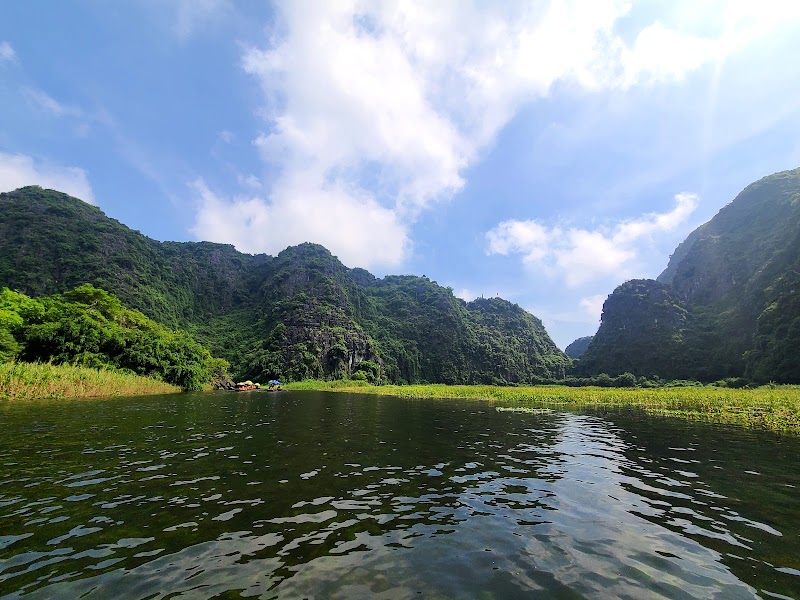
Discovering the Muong Festival: Cultural Adventure in Hoa Binh, Vietnam
Experience the Muong Festival in Hoa Binh, Vietnam—a captivating cultural event where music, dance, and ancient rituals breathe life into the mountains. Perfect for adventurers seeking an immersive yet accessible journey into local traditions and the rugged landscapes of northern Vietnam.
Wear Sturdy Footwear
The festival site terrain includes packed dirt paths and occasional muddy patches, so shoes with good grip and ankle support will keep you steady.
Stay Hydrated
Carry a water bottle to stay refreshed, especially if you’re walking several kilometers through the festival grounds in the midday sun.
Dress in Layers
Early mornings and evenings can be cool, while midday warms up quickly. Layered clothing lets you adjust to changing temperatures comfortably.
Respect Local Customs
Photography is welcome but ask permission before taking close-up shots of locals or ceremonies to honor cultural sensitivities.
Discovering the Muong Festival: Cultural Adventure in Hoa Binh, Vietnam
Every autumn in Hoa Binh province, the Muong Festival awakens the rich traditions of the Muong ethnic people in a lively mix of colors, sounds, and rituals. This festival, set against the rugged hills and fertile valleys of northern Vietnam, invites adventurers not only to witness but to engage with a culture fiercely itself—proud, ancient, and vibrantly alive.
The celebration revolves around ancestral worship and communal unity, with ceremonies held over several days. At the heart of the action lie the rhythmic beats of bronze drums and the lively swirls of traditional dances. Your path through the festival site will wind past hand-carved wooden houses and stalls brimming with artisanal crafts, offering tangible insight into Muong life.
Plan to arrive in the morning when the chill still clings to the air and the first sounds of the day’s festivities echo from the open fields. The terrain is mostly flat but uneven with packed earth and occasional muddy patches, so sturdy footwear is advised. Expect to cover about 2 to 3 kilometers as you explore village grounds and temple areas.
Engagement here goes beyond spectator experience—you can sample traditional Muong dishes like sticky rice and grilled buffalo meat, learn local weaving techniques, or try your hand at folk games. Each activity offers a chance to connect with the environment and the people who live in harmony with its cycles. The surrounding forests push their green fingers close to the village, whispering stories in the wind, daring you to look closer and respect a landscape that’s more than backdrop—it’s a partner in celebration.
For practical visitors, hydration and weather preparedness are key. The festival falls during Vietnam’s cooler, dryer months, but sudden rains can disrupt plans. Carry water, wear layered clothing, and bring a compact rain jacket. Mornings and early evenings bring the best light for photography, with fiery skies setting the stage for portraits of spirited dancers and ornate regalia.
The Muong Festival is a rare chance to step into an ongoing story of cultural endurance wrapped in an open-air setting. While the crowds pulse with excitement, the mountain air remains sharp, reminding adventurers that this experience requires both openness and respect. By the time the sun dips behind Hoa Binh’s crests, you’ll feel the pulse of a tradition as wild and constant as the land itself.
Nearby Trips
All Adventures
Boat Charters
Water Activities
Adventures near Hoa Binh, Vietnam
Discover the unique and memorable adventures that make Hoa Binh, Vietnam special.
Frequently Asked Questions
When exactly is the Muong Festival held?
The Muong Festival typically takes place in the fall months, mainly in September or October, depending on the lunar calendar. It coincides with traditional harvest celebrations and is often scheduled to maximize local community participation.
Are there any language barriers for visitors?
Most locals speak Muong language and Vietnamese. While English is limited, basic greetings and politeness go a long way; hiring a local guide or translator can enrich your experience.
Is the festival family-friendly?
Yes, the Muong Festival welcomes visitors of all ages. There are engaging cultural performances and activities suitable for children, though crowded or noisy moments might require supervision.
Can I interact with the community during the festival?
Absolutely. The Muong people are hospitable and often invite visitors to participate in traditional games, crafts, and tasting sessions, making interaction a core part of the experience.
What are some lesser-known places to explore nearby?
Beyond the festival grounds, the nearby Pu Luong Nature Reserve offers serene forest trails and panoramic viewpoints less frequented by tourists but rich in biodiversity and landscape.
What should I be aware of environmentally while visiting?
Respect the fragile rural environment by avoiding littering, staying on established paths, and refraining from disturbing wildlife or cultural artifacts—local communities actively protect their natural and cultural heritage.
Recommended Gear
Comfortable Hiking Shoes
Offers support and grip on varied terrain including dirt paths and uneven surfaces.
Water Bottle
Essential to stay hydrated during long periods outdoors amidst festival activities.
Light Rain Jacket
Compact protection against sudden autumn rain showers common in Hoa Binh.
Camera or Smartphone
Capture vibrant moments and landscapes, but be mindful of local customs around photography.
Local Insights
Hidden Gems
- "The Dao Museum in nearby Mai Chau offers additional insights into local ethnic groups."
- "A small bamboo bridge known locally as Cau Tre Bamboo Bridge offers quiet reflection with river views."
Wildlife
- "Watch for resident black gibbons and various bird species in the forested hills surrounding Hoa Binh during festival days."
- "Dragonflies dart boldly near streams that run close to the village, adding movement and color to the scene."
History
"The Muong people, one of Vietnam’s oldest ethnic groups, have preserved their ancestral stories and rituals through the festival, maintaining cultural practices despite centuries of change."
